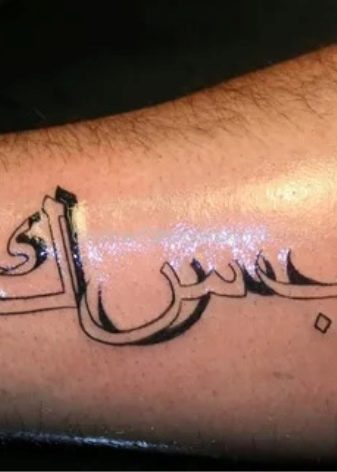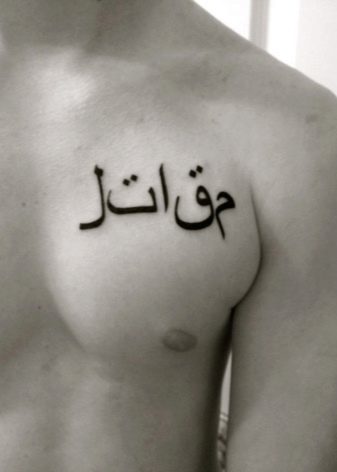All about Muslim tattoos
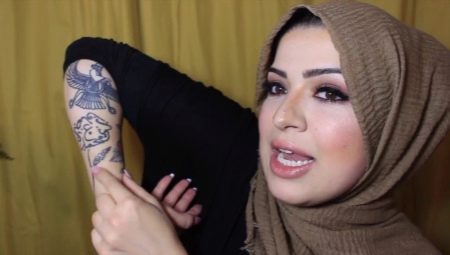
Muslims have a special relationship with wearable images. In this regard, they have a lot of prohibitions and restrictions. Nevertheless, Muslim-themed tattoos are rapidly gaining popularity. We will tell you about the peculiarity of such compositions, what restrictions and prohibitions exist for their application, in this article.
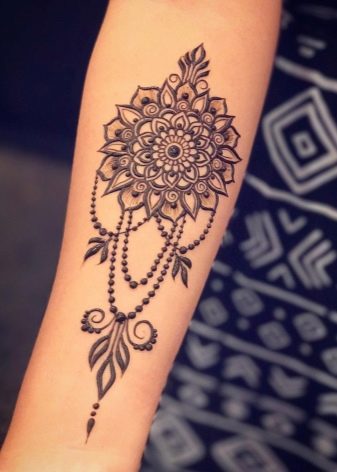
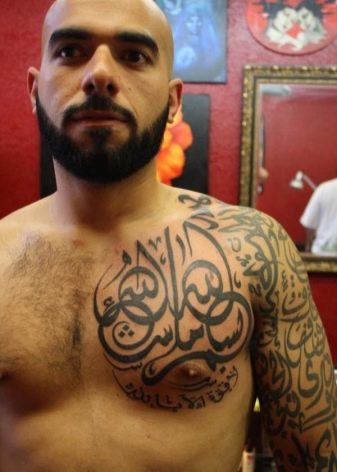
Application prohibitions
The Qur'an - the holy Muslim book - opposes any amendments to the appearance of a person, be it a woman or a man. Tattoos are generally perceived as opposition to the will of Allah, and therefore among Muslims they are associated with something sinful or pagan.
It is believed that a Muslim who decides to go against the will of Allah will be punished. According to the Qur'an, he will be forever cursed.

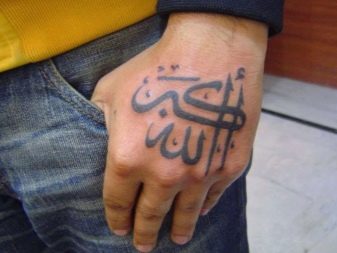
For this reason Muslims' tattoos are extremely rare, mostly temporary designs that fade from the skin over a certain period of time. Typically, these tattoos are painted with henna or applied using special stickers. Such wearable designs are allowed, since they are easily removed and do not change human skin.
However, there are also limitations: a tattoo Should not contain slogans or have a connection with the wrong ideology, a lost trend. The application of inscriptions with the name of Allah and the verses of the Koran as a body design is also prohibited, as is the application of sinful images, for example: with devils, hell and other elements on a similar theme. Covering the tattoo with special protective solutions is also not recommended. - it should be washed off without hindrance.
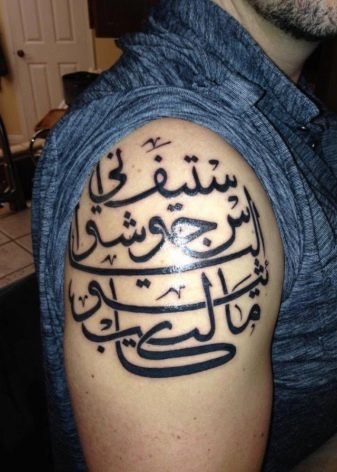
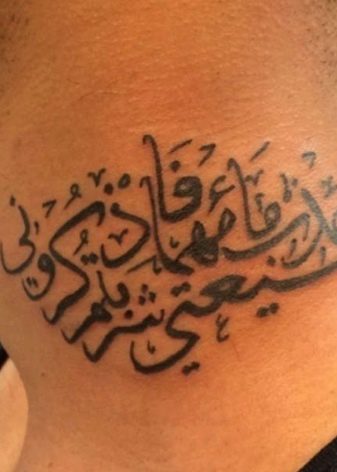
Moreover, women can only apply such tattoos on their hands or head. They are strictly forbidden to show their wearable drawings to strangers - only the husband can see them. And unmarried women cannot get temporary tattoos using black henna. If we talk about men, then they have their own prohibitions. So, they should not get temporary tattoos in the area from the navel to the knees.
Permanent tattoos can be seen on those people who came to religion after certain images were applied to the body.
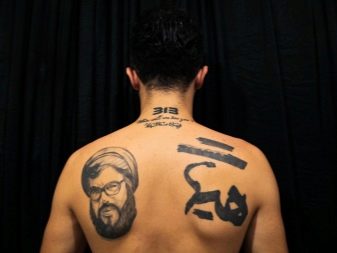
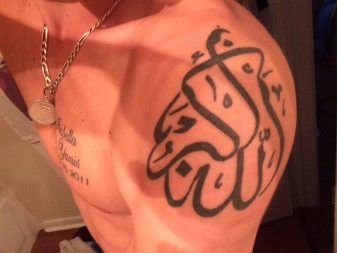
However, it is still recommended to get rid of such drawings with medication or surgery, especially if it does not harm health. Otherwise, tattoos are left.
There are, of course, exceptions, but they are very rare. Body inscriptions are allowed, which inform about a person's blood group and contain information about his serious illness, for example, diabetes. Such inscriptions can often save a person's life.
Some people avoid getting tattoos with Muslim themes so as not to offend the religion or its followers. However, at the present time the situation is changing for the better. Conservatism fades into the background, and the new generation of Muslim believers is beginning to be more loyal to the art of tattooing, considering body drawings to be a beautiful decoration.
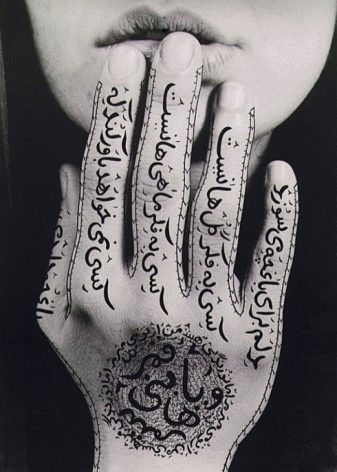
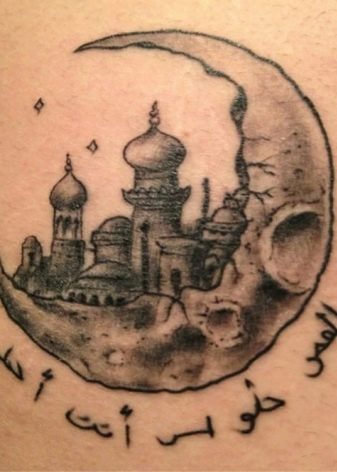
Now tattoos made in the Muslim style are very popular all over the world. Moreover, most often, in their semantic meaning, they do not in any way relate to the Islamic faith.
The fact that there is a huge demand for tattoos with oriental motives is quite simple to explain: they are beautiful and original, and the language and Arabic culture are increasingly popularized. Various inscriptions and ligatures in Arabic, ornaments and patterns, as well as various symbols of the Tatar, Turkish, Azerbaijani and other peoples - all this looks aesthetically pleasing and interesting on the body. But a tattoo with the image of something alive is strictly prohibited, regardless of whether a person or a permanent tattoo is applying a temporary tattoo.
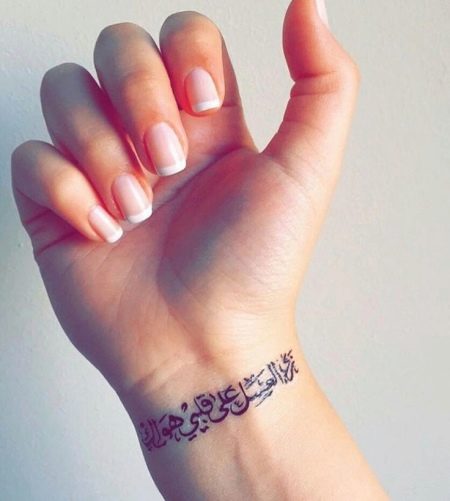
It is interesting that in ancient times, when religion was not so strongly developed and people did not have so many prejudices, Muslims had tattoos quite often. You could see them even on very babies! Most of such drawings were applied as amulets that protected their owner from the effects of evil forces, evil eyes and damage. Most often, such tattoos were a collection of different geometric shapes, ornate patterns and ornaments.
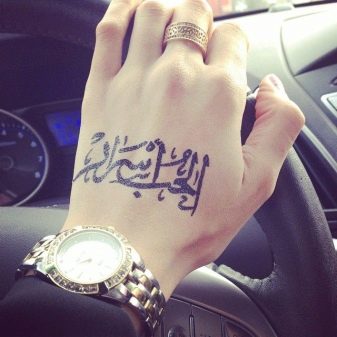
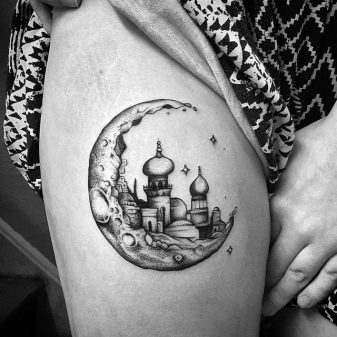
Views and sketches
There are many options for sketches of Muslim tattoos.
Especially popular among them are the inscriptions in Arabic, which are written from right to left and distantly resemble an exquisite pattern.... It can be just one word, or maybe a whole quote that carries something wise or important for a person, a verse or someone's statement. Such inscriptions are often made in black, but adding other shades to them for variety is also allowed.
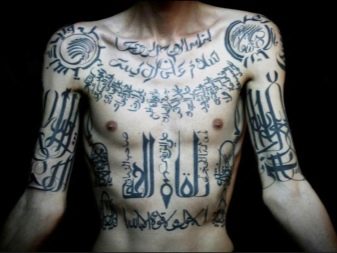
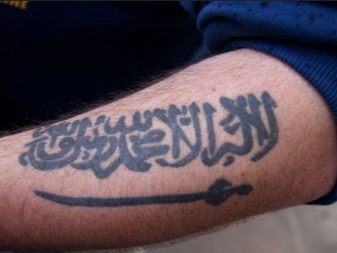
However, before applying a tattoo in Arabic to the body, you need to know exactly the meaning of the inscription, since its translation may not always be unambiguous. It is also not worth resorting to the help of an online translator here, since in most cases they translate illiterately. It is best to consult with a person who is a native speaker of this language. Otherwise, there is a risk that the inscription will be absolute nonsense.

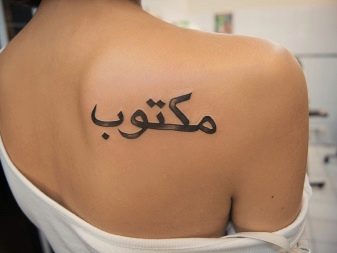
The choice of the master who will make such a tattoo is also important here.... The artist must understand calligraphy and know how to accurately transfer the inscription to the skin, because a few incorrect strokes can completely distort the meaning of the written inscription.
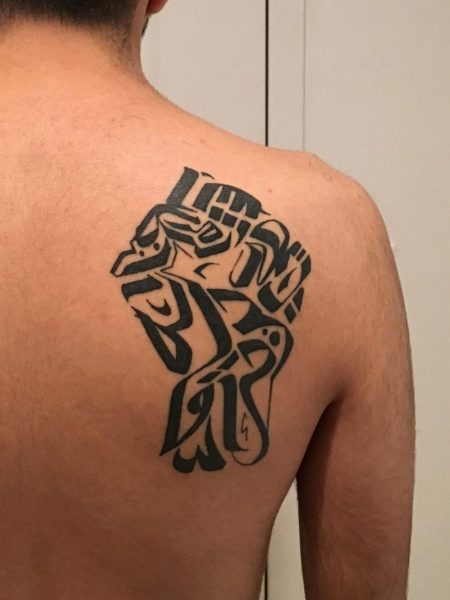
There are other variants of drawings that carry a sacred meaning. For example, people often depict a crescent, moon or month on their bodies, which symbolizes a nocturnal lifestyle, some mystery and secrecy, the desire for balance and tranquility.Often such a drawing is combined with the image of stars, which characterize willpower, a personality with a strong character.
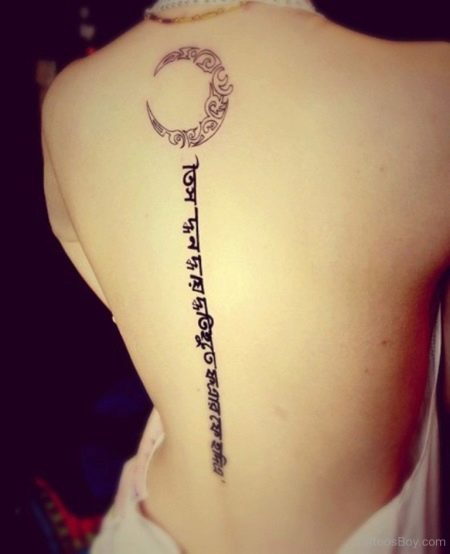
The sun symbolizes warmth, positive energy, light and happiness, and flowers, which are used for both male and female tattoos, reflect the inner state of a person.
The image of the mosque, which is most often distinguished by its scale and detail, demonstrates faith in God, love and the desire to get closer to him, the desire to be under his protection.
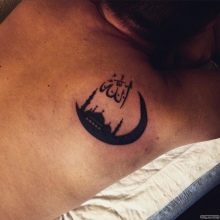
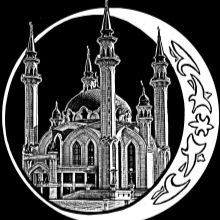
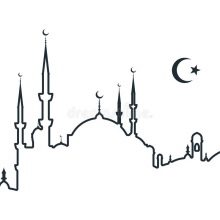
A tattoo with a warrior's sword will symbolize courage, honor and nobility, full acceptance of the prepared path of life.
Of particular importance is the Hamsa tattoo (or, in other words, the hand of Fatima)... Usually an eye is depicted in the middle, symbolizing holding, or various patterns. This sign is considered a strong protective amulet, it is an open palm with five fingers. This tattoo symbolizes wisdom, protection and happiness. For girls, such a tattoo can also mean motherhood.
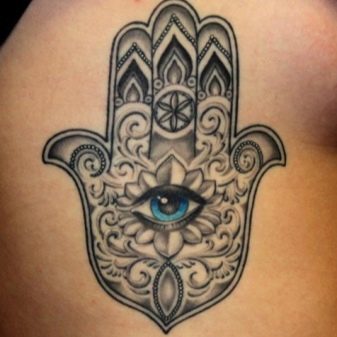
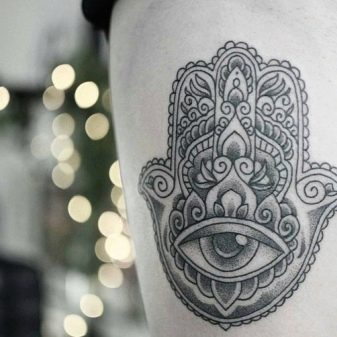
Places of application
Muslim tattoos can be applied to a wide variety of areas - it depends on the preferences of the person, as well as on the size of the design itself.
So, tattoos are applied to the left shoulder that protect a person and attract good luck to him. The tattoo on the right shoulder symbolizes wisdom, love and family. Usually, in such places, medium-sized options look most harmonious. A tattoo on the wrist, according to many, will attract energy. Small and easy-to-follow drawings will work best in this area. Tattoos on the palm or on the finger are often done by those people who want to demonstrate their drawing to others. Such tattoos are most often placed on the chest, which are amulets and provide their wearer with protection from evil and failure. On the shoulder blades, religious symbols, inscriptions and patterns are often placed, which are designed to help a person calm down his dark side, get rid of weaknesses and inner fears.

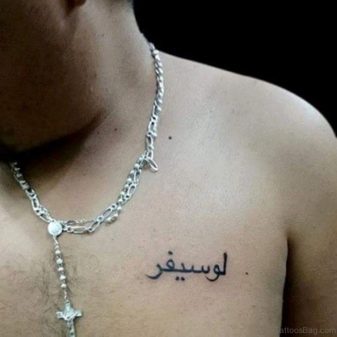
The rest of the places, be it the side, back or neck, are also suitable for placing the tattoos in question.
How to choose a tattoo?
To choose a tattoo, you need to decide what meaning you want to put into it. Based on this, you can select a sketch. It can be found on the Internet, or you can order an individual drawing from the artist, which no one will have.
When choosing a tattoo, you should also decide on the place of its application. Its size will largely depend on this, as well as composition and stylistic direction.
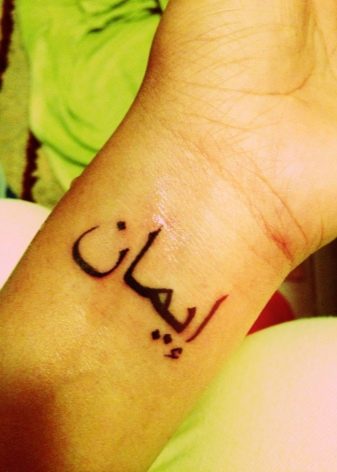
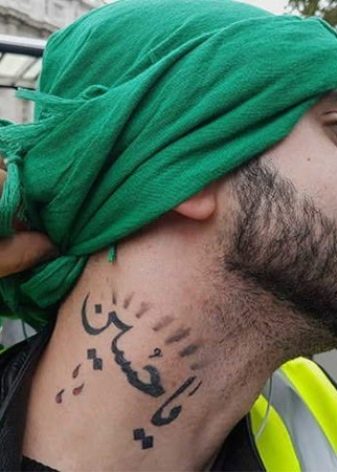
If you decide to apply a tattoo with an inscription on your body, then you need to know exactly about its meaning before applying it. Otherwise, the meaning of the tattoo may be distorted, which is why there is a risk of getting into an absurd and stupid situation.
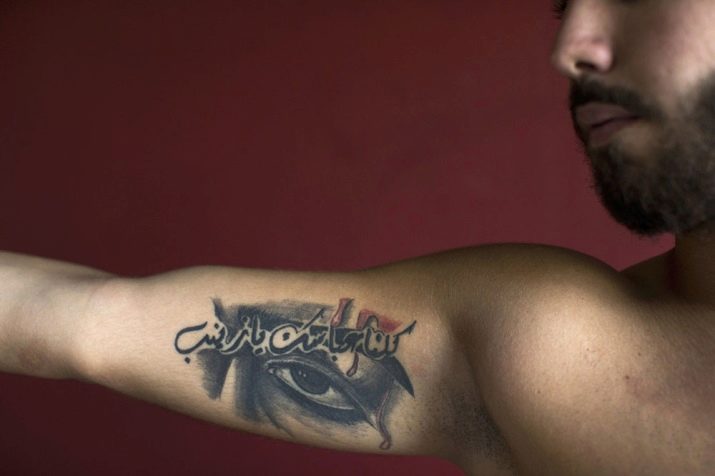
Also worth mentioning about tattoos with names. They are very popular, but their application is not always justified. Such drawings by themselves do not carry any semantic meaning. An inscription with your name will not bring anything to a person, and someone else's name can simply lose relevance for a person, because of which the tattoo will have to be removed in one way or another, and this process is often quite painful.
